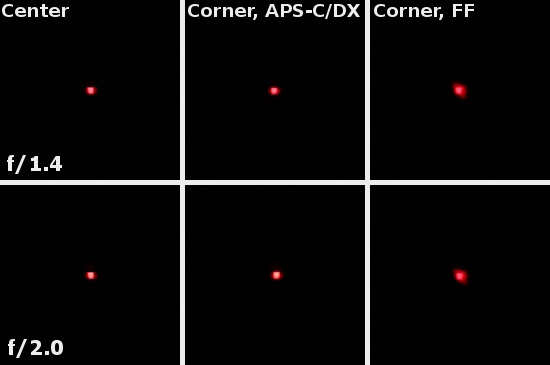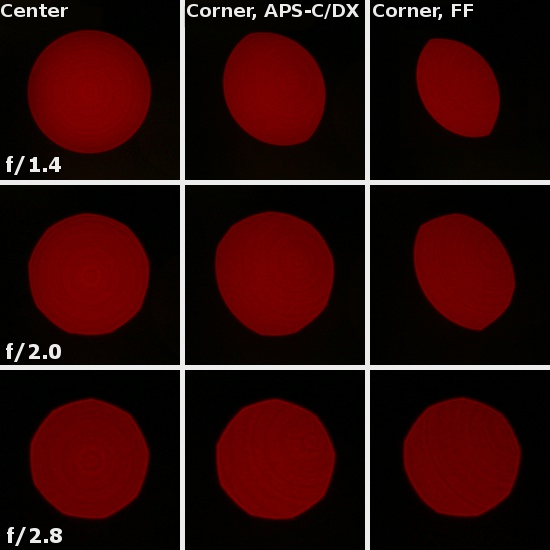Carl Zeiss Otus 85 mm f/1.4
7. Coma, astigmatism and bokeh

The astigmatism of the tested lens is slight – the average difference between horizontal and vertical MTF50 function values amounted to just 5%.
Please Support UsIf you enjoy our reviews and articles, and you want us to continue our work please, support our website by donating through PayPal. The funds are going to be used for paying our editorial team, renting servers, and equipping our testing studio; only that way we will be able to continue providing you interesting content for free. |
- - - - - - - - - - - - - - - - - - - - - - - - - - - - - - - - - - - - - - - - - - - - - - - -
Defocused light points look very nice, with an even, smooth light spread which means the lens will provide great blurred background. You can notice a trace of ‘onion rings’ bokeh but, fortunately, that effect is not distinct. The significant truncation of the rings in the corners worry us a bit – it might indicate some vignetting problems.







